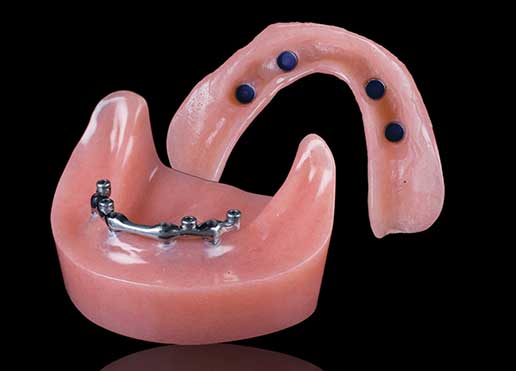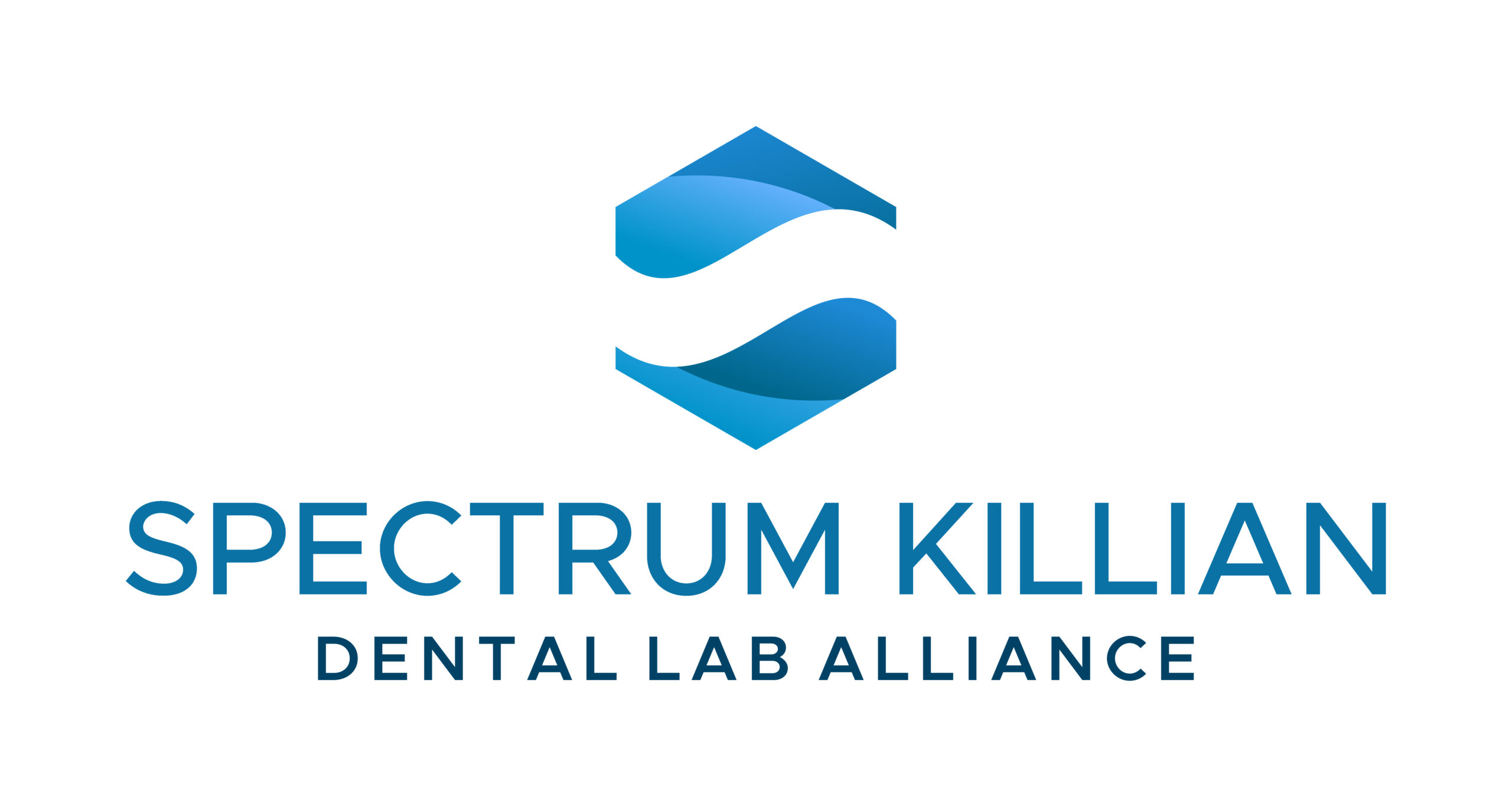Overdentures

Overdentures can be placed over retained teeth or dental implants. If the patient has teeth present, overdentures may be a good option because the appliances may not require tooth extraction, a procedure that can make some patients anxious. With this treatment, they can rest assured that they are retaining some of their natural teeth.
Locators
There are many ways of attaching an overdenture to implants. One of the most efficient and cost-effective is the use of Locator® attachments, which is the retention mechanism employed by overdenture. The system includes freestanding abutments, or Locator attachments, that connect to the individual implants. “Retentive caps” are embedded in the overdenture and provide retention by seating over and engaging both the internal and external surfaces of the Locator attachments. The retentive caps come in a variety of strengths and are easily changed out as the parts wear or the patient requests greater retention. By stabilizing the overdenture, these retentive devices improve function and chewing efficiency for the patient. For clinicians looking to provide their edentulous patients with better function, stability and quality of life, the Locator Implant Overdenture is an excellent, cost-effective option.
MK1
The MK1 is designed to achieve and balance the requirements of function, hygiene, and aesthetics in the oral environment. The prosthesis is connected to natural abutments or implants using the frictionless positive locking MK1 Attachment. The pre-milled female and milled lingual arm transfer chewing forces to the central axis of the abutment. No friction is extended to the abutments when placing or removing the prosthesis.
The MK1 Attachment can be adapted to almost all dental prostheses. In an implant reconstruction case, the loss of soft and hard tissue, the position and alignment of implants and the number of implants often make it difficult to cement or screw-retain an aesthetic and functional restoration. Maintaining access to good oral hygiene also increases in difficulty. The MK1 provides a convenient restorative solution to these issues making it an ideal choice.
MK1 appliances require 15mm of vertical space measured from the crest of the ridge to the incisal edge.
Hader Bar
The Hader Bar system is the most popular of all bar systems due to its economy and simplicity. Its design provides advantages over other overdenture systems. Its strength and flexibility allow for vertical and rotational movement making it ideal for:
- A two-abutment bar with a single straight section
- Protecting abutments
- Multiple bar sections
- Rigid or fully abutment-supported prostheses
The Hader Bar is also easy for a clinician to examine and maintain. Replacing a clip takes less than 30 seconds.
More restorations available!
Contact Us
- Toll Free: (877) 528-2522
- Local: (951) 699-0435
- Fax: (951) 699-2226
- Email Nash Dental Lab


